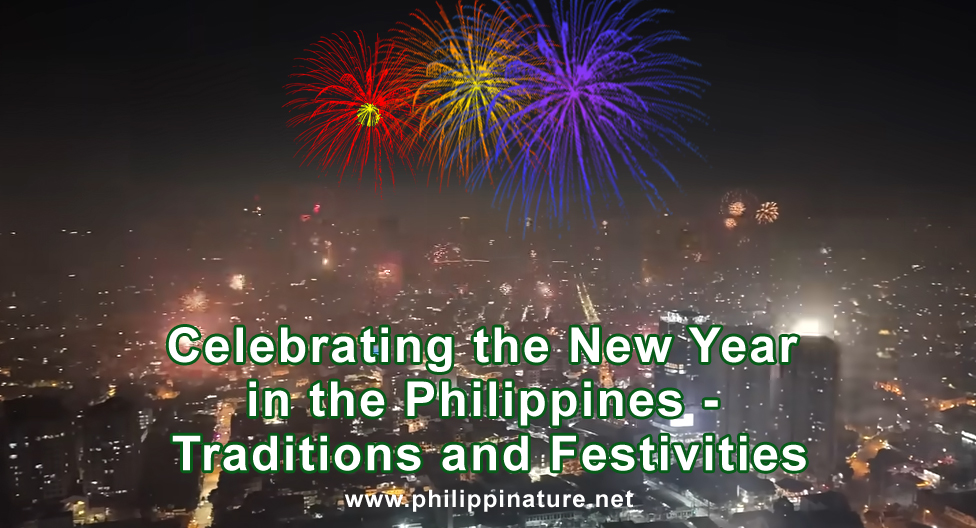Celebrating the New Year in the Philippines – Traditions and Festivities

As the calendar turns, the Philippines erupts into a vibrant celebration of the New Year, filled with rich traditions, family gatherings, and joyful festivities. Known locally as “Bisperas ng Bagong Taon” (New Year’s Eve), this occasion is a blend of age-old customs and modern-day revelries that reflect the Filipino spirit. Here’s a glimpse into how Filipinos celebrate this joyous occasion.
Pre-New Year Preparations
The excitement for the New Year starts days in advance. Filipinos believe in preparing for the New Year to ensure good fortune. Homes are thoroughly cleaned to sweep away the bad luck of the past year, and decorations are hung to welcome prosperity. Traditional motifs include round shapes, symbolizing wealth, and vibrant colors, particularly gold and red.
Shopping for Lucky Foods
Food plays a significant role in the New Year celebration. Families often prepare a variety of dishes, emphasizing round fruits like oranges, grapes, and apples, as they symbolize abundance. Traditional meals may include lechon (roasted pig), pancit (noodles for long life), and various sweet treats, all meant to attract good fortune for the year ahead.
New Year’s Eve Festivities
As the sun sets on December 31st, excitement fills the air. Families gather for a festive dinner known as “Noche Buena,” where they share a meal together, often featuring a feast of traditional dishes.
Fireworks and Noisemakers
When the clock strikes midnight, the sky lights up with spectacular fireworks displays. Communities come alive with colorful pyrotechnics, and families create a cacophony of noise using firecrackers, horns, and other noisemakers. This tradition is believed to ward off evil spirits and usher in a year filled with good luck.
Jumping at Midnight
A quirky tradition among many Filipinos is to jump at midnight. It’s said that if you jump at the stroke of midnight, you will grow taller in the new year. This playful custom adds a layer of fun to the festivities and is often accompanied by laughter and cheers.
First Day of the New Year
On January 1st, families continue the celebration with various activities. Many Filipinos attend Mass to start the year with blessings and gratitude. Afterward, it’s common to visit relatives, where the cycle of feasting and socializing continues.
Labanan ng Puto Bumbong
In some regions, the New Year festivities include unique local traditions. For instance, the “Labanan ng Puto Bumbong” is a playful competition involving the traditional sticky rice delicacy. This vibrant celebration highlights regional flavors and the communal spirit of the season.
New Year Resolutions and Family Values
In the Philippines, the New Year is also a time for reflection and renewal. Many people set resolutions, aiming to improve themselves in the coming year. Family values play a crucial role in these resolutions, with an emphasis on spending more time together and supporting one another.
The Philippine New Year celebration is a beautiful tapestry woven with traditions, family bonding, and hope for the future. It’s a time when Filipinos come together, embracing their culture while looking forward to new beginnings. As fireworks light up the sky and laughter fills the air, the spirit of the New Year in the Philippines is truly a celebration of life, love, and hope. Whether through vibrant festivities or quiet family gatherings, it’s a reminder that togetherness and joy are what truly make the New Year special.










